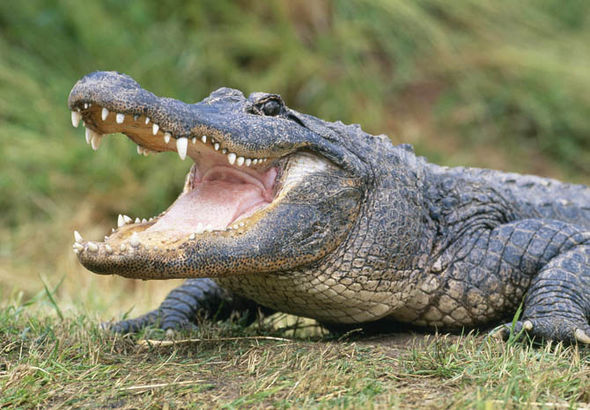Animals are incredible. They are familiar with what's going on around them. More often than not, they pick up on things we aren't even aware of. They hear things we can't hear, smell things we can't smell, and sense things that we cannot. Biologist Edward O. Wilson says that we sense less of the physical world around us than most people would ever know. We are surrounded by a whole world of sensations that are completely unknown to us but relatively known to many animals.
Here are some animals with incredible super senses.
Here are some animals with incredible super senses.
Star-nosed moles have 22 tiny trunks containing a total of nearly 100,000 nerve fibers — six times as many touch receptors as on a human hand. As the mole burrows, the tentacles sweep ahead like a high-speed broom, faster than a human eye can detect.
Alligators are extraordinarily sensitive to minute changes in vibration, which helps them locate prey.
Arctic reindeer can see ultraviolet light to spot their next meal and avoid predators.
Sharks smell through a pair of nostril-like holes, called nares. When its olfactory sensors detect the odor of a potential catch, the shark will turn into the current that is carrying the chemical. In addition, a shark's olfactory talents are so refined that it can often tell which of its nares is getting the stronger scent signal, guiding it even more precisely toward its prey. Up to 40 percent of a shark’s brain is dedicated to sense of smell.
Elephants communicate over long distances with the help of infrasonic sounds.
A recent discovery was made showing that dolphins appear capable of directly perceiving the shapes of objects through echolocation.
Bats depend on their antennae-like ears to determine distances using echolocation, i.e. bouncing changing sounds off of objects.
Snakes’ tongues do more than taste: They help track prey. Their forked tongues pick up scent molecules that the animal transfers, via specialized ducts in the mouth, to the Jacobson’s organ, which can detect where the scent’s source is located. Some species of snakes can see heat forming a kind of thermal image of the prey.
Sea turtles can sense earth’s magnetic field which helps them navigate.
Jewel beetles have sensors that detect infrared radiation from forest fires as far as 50 miles away.
Moths can hear ultrasonic calls of echo locating bats.
Mosquitoes sense exhaled carbon dioxide to find their next blood prey.
Worker honeybees navigate using rings of paramagnetic iron oxide in their abdomens that swell or shrink depending on outside magnetic changes, allowing the insects to find their way home by following changes in the Earth’s magnetic fields.














